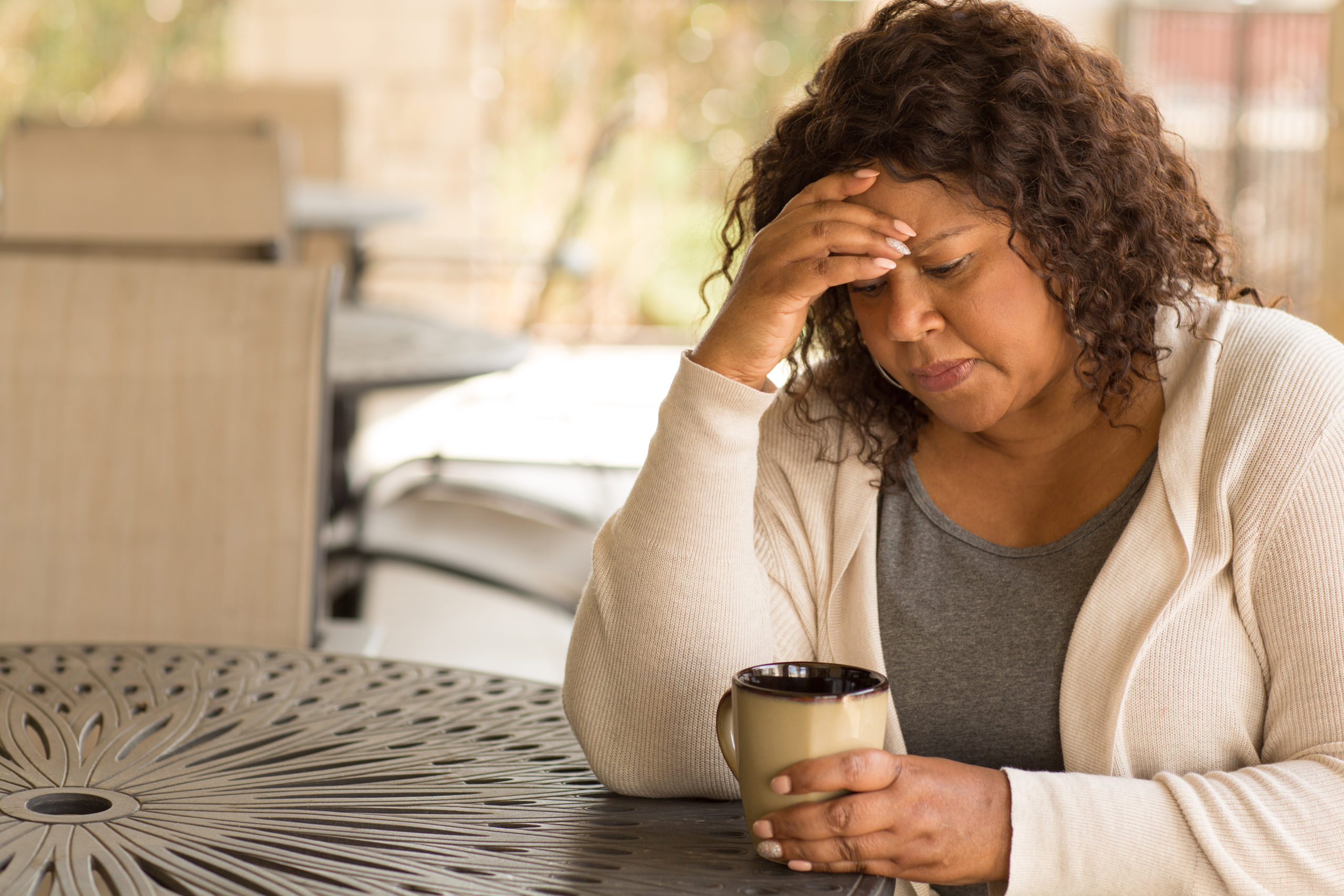What are Mood Swings, Rage & Other Intense Emotions?
Moods and emotions are often used interchangeably, but they describe different things. Moods can last for hours or days whereas emotions are experienced very quickly, sometimes only for minutes at a time. Moods are a general feeling and do not always happen as a result of a specific situation. Emotions, on the other hand, are triggered, usually by a person or an event. Emotions are usually more intense than mood. In some cases moods and emotions can be different states of the same ‘feeling’, for example you can be in a sad mood, but you can also (at the same time or separately) have intense sad emotions. Moods and emotions are linked, so when you are in a good mood, you are likely to have positive emotions such as happiness and hopefulness. The opposite is also true – bad moods generate bad feelings. [1]
Mood Swings
About half the women in menopausal transition will experience fast changes in their moods (mood swings) as well as episodes of intense emotions that sometimes cannot be contained. [3]
These may happen at the same time, or may be completely independent of each other – for example, you may be in a happy mood yet have an intense bout of rage after experiencing a trigger. Swings in mood state can range between euphoria, mania, anxiety and depression, among others. Changes in mood are strongly linked with hot flashes, insomnia, cognitive changes and fatigue. Chronic stress can both contribute to mood swings and be worsened by them.
It is still unclear how much responsibility for mood swings can be placed directly on hormone changes versus the impacts of other menopause symptoms such as hot flashes and insomnia. However, it has been shown that women who have severe PMS-like symptoms are more sensitive to changing hormone levels, and may also experience worse symptoms during perimenopause. [3]

Intense Emotions including Rage
The most common intense emotional outbursts are episodes of rage and irritability. Intense emotions may come seemingly out of the blue, making them very disruptive, hard to contain, and they may even be frightening. Menopause and anger toward husbands is very common.
Recent research shows that there is a statistically significant relationship between the severity of volatile emotional symptoms and relationships – with a partner or with other relationships. [2][13]
Common emotional changes experienced by women during the menopausal transition can include:
- Irritability
- Rage
- Sadness
- Lack of motivation
- Anxiety
- Aggressiveness
- Difficulty concentrating
- Fatigue [4]

There are many reasons other than perimenopause that can cause women to experience heightened emotions. If your emotional changes are disruptive or stressful, talk to your healthcare provider to rule out any other causes and discuss treatment options. On a positive note, moods and emotions typically settle down when your hormones level out. Sometimes just knowing that these mood swings and emotional ups and downs do not last forever can help you cope.
Self-care & Natural Remedies for Mood Swings
Have compassion for yourself because none of this is your fault – it really is a very difficult time for so many women. There are things that you can do, however, to help make it through these challenging symptoms.
- Support yourself in times of low or negative moods with meditation, mindfulness, and breathing exercises.
- Explore new ways to soothe yourself, such as forest bathing (walking in trees) or sound bathing.
- Pick up a new hobby or expand your current creative activities by exploring new types of art or music.
- Be very aware of the concept of ‘self-silencing’ and do everything in your power to avoid this common female response. Self-silencing is a strategy that women often use where they silence certain feelings, thoughts, and actions in order to maintain their relationships. Accept your changing moods and understand that they are not your fault and not a reflection of you being ‘bad’ or ‘difficult’. If you have a habit of self-silencing, talk to your healthcare provider to seek appropriate treatment. Women who self-silence on a regular basis are more prone to depression. [6] [7]
- Talk to your girlfriends about menopause! This can be so normalizing and provide context for you. Knowing that you are not alone is a big help.
- Have a conversation with family about what you are experiencing, and ask for support and compassion from your employer.
- Seek professional help, individual therapy and/or counseling to learn about tools that can help you recognize and manage your emotions and moods.
- Choose a healthy lifestyle when you can, and focus particularly on getting sufficient good nutrition and recreational movement and exercise.
- It is clear that insomnia can negatively affect mood and emotions, so anything that can be done to help get quality sleep will likely help.
- Cut down on alcohol, recreational drugs, and late nights. [4]
A dysphoric, or unhappy, mood and depression have a strong socio-economic basis (as measured by education, occupation, and income) and are also strongly linked to chronic stress. While changing your socio-economic status may not be achievable, managing stress is always possible. Look to the Mind Body Wellness Therapies page for more information on stress management. [8] - Menopause is a sign of aging, so it can trigger mood issues tied to acceptance of getting older. Practice gratefulness by focusing on what you do like about your body and mind rather than only noticing age-related changes such as wrinkles. Remember that menopause is a natural process, one that often leads to a greater sense of freedom and lighter moods. [4]

Self-Care & Natural Remedies for Intense Emotions including Rage
- Support yourself when you have intense emotions with meditation, mindfulness, and breathing exercises. In the beginning, you may not be able to catch yourself before your emotional outburst, but practicing short meditations and mindfulness can calm you, help you forgive yourself, and give you some space for reflection. In time, you may be able to gain enough awareness of an impending outburst and avoid it.
- Make sure your family and friends are aware of what you are experiencing and work with them to find effective ways of managing your outbursts. They may also be resources that you can use for objective opinions of triggers or other information that can help you as you work to manage and avoid further intense emotions.
- If you are concerned about intense emotions in a professional setting, ask for support and compassion from your employer. Again, your workplace may be able to provide feedback to help you manage.
- Seek professional help, individual therapy and/or counseling to learn about tools that can help you recognize triggers and manage your emotions.
- Choose a healthy lifestyle when you can, and focus particularly on getting sufficient good nutrition and recreational movement and exercise.
- It is clear that insomnia can negatively affect emotions, so anything that can be done to help get quality sleep will likely help.
- Journal and track emotional events carefully on a daily basis. Look for patterns and triggers such as certain people, events, activities and even foods.
- Cut down on alcohol, recreational drugs, and late nights as doing this may help improve the quality of your sleep and boost your emotional strength. [4]

Therapies for Mood Swings
It can be very difficult to get validation for mood related menopausal transitional symptoms. If you have an existing emotional or mood disorder, or if you experience severe PMS (which is linked to experiencing mood and emotional changes) please ensure you have trusted, professional care heading into perimenopause. [3]
If you do not already have a healthcare practitioner who is familiar with identifying and treating symptoms of menopause, the North American Menopause Society provides a list of menopause practitioners here.
Here are some of the primary therapies that your healthcare practitioner may suggest or prescribe:
Therapies for Intense Emotions including Rage
Some women experience specific emotional responses during perimenopause, where their rage or their irritability for example, stand out as the main emotional response that troubles them. Intense feelings of rage can be frightening, and ongoing irritability can have a major impact on professional or personal relationships. If you are finding that, in addition to mood swings, you have a repeated experience of an intense emotion, talk to your healthcare provider to discuss your treatment options. [9]
The Science
There is a clear understanding in the research that estrogen affects women’s mental health and overall emotional well-being. Estrogen is clearly linked to female-specific mood problems including premenstrual symptoms and postpartum depression. What is less clear is the exact pathways that are affected by changes in estrogen levels. Normal estrogen levels vary significantly throughout the menstrual cycle, even before perimenopause. There is no indication that a specific measured level of estrogen is correlated with emotional difficulties, meaning absolute levels of estrogen aren’t the problem but rather variations in individual women’s estrogen levels. [14]

Adapted from [2] Brinton et al 2015
Estrogen is a powerful hormone, with many different direct and indirect effects inside your body. Hormones and neurotransmitters are both chemical signaling molecules produced in our bodies. The primary difference between hormones and neurotransmitters is that hormones are produced in endocrine glands and are released into the bloodstream where they travel away from their place of origin to act on a target. Neurotransmitters, on the other hand, enable nerve impulses to travel between neurons, or nerve cells.
Estrogen affects the production of serotonin, which is a neurotransmitter that can also act as a hormone when it carries chemical messages throughout your body. Serotonin plays a large role in regulating many body functions including mood and sleep. It is commonly known as the ‘happiness molecule’ because it influences your moods and emotions. [10] [11] Estrogen also impacts the production and the effects of endorphins. These hormones are released in your body when you experience pain or stress, as they work as natural painkillers and reduce stress levels. They are known to improve mood. Endorphin levels increase when you participate in enjoyable activities including eating and having sex. [15]
The impact of falling estrogen levels on serotonin and endorphin production and activity is unpredictable and highly variable from woman to woman.
Mood swings and emotional changes during the menopausal transition are classified as neurological symptoms because they affect the brain. The presence of these symptoms as well as their duration, variation and intensity may be warning signs for increased risk of neurodegenerative diseases later in life. Please make sure your healthcare provider is aware if you are experiencing these symptoms. [2]
Statistics
Yes, they are a relatively common symptom seen in perimenopausal women – women who are transitioning between their reproductive years and menopause (the life stage when a woman is no longer able to conceive). Once menopause occurs – defined as starting twelve months (one full year) after your last period – estrogen levels stabilize and mood swings will improve.
The exact cause isn’t fully understood, but rage is correlated with changing estrogen levels that then impact the production and use of serotonin and endorphins, both of which are natural emotion- and mood-boosters. Menopause rage is also correlated with the quality of your relationship with your partner. In fact menopause rage is very typically directed at husbands. You may consider seeking counseling if your relationship is suffering or if it needs improvement to become more supportive.
There are things you can do as part of your self-care routine to help with mood swings. In particular, finding ways to calm and soothe yourself with meditation, breathing exercises, spending time in nature, and ensuring you are eating a nutritious diet and getting sufficient physical activity will help. A lack of sleep can make your moods worse and more volatile, so work to manage night sweats and anything else that may be impacting your quality of sleep. If your moods are disruptive and impacting the quality of your life, speak to your healthcare provider. You may benefit from medications or other therapies such as counseling and talk therapy.
The timing of increased or more intense mood swings is unpredictable. If you are experiencing these as a disruptive symptom of perimenopause, you are not alone. It is clear that mood swings become more common and are often accompanied by intense emotional changes and outbursts, starting when a woman enters the menopausal transition. Mood swings and emotional changes do level out and calm down once estrogen levels stabilize in menopause, indicating that it is the change in estrogen levels, not absolute estrogen levels that impact mood and emotions.
While the obvious answer is found in gender, age and racial inequity, the study of mid-life women’s sexual and reproductive health has historically been less profitable than fertility. Thankfully the “menopause market” is on the rise, which will hopefully drive more dollars into the evidence-based scientific research that is so badly needed to drive more safe, effective and personalized treatments for menopausal women.
FALSE
Unfortunately, women experiencing the menopausal transition continue to be excluded from the workforce where they feel embarrassed and isolated by their untreated symptoms. Slowly this is changing as employers and insurance companies start to realize that leaving the health concerns of this enormous group of workers unaddressed is costly.
Compiled References
[1] https://www.psychologytoday.com/ca/blog/hot-thought/201805/what-are-moods
[2] Brinton, R. D., Yao, J., Yin, F., Mack, W. J., & Cadenas, E. (2015). Perimenopause as a neurological transition state. Nature reviews. Endocrinology, 11(7), 393–405. doi: 10.1038/nrendo.2015.82
[3] Björn, I., Bäckström, T.,Lalos, A. & I. Sundström-Poromaa (2006) Adverse mood effects during postmenopausal hormone treatment in relation to personality traits. Climacteric, 9(4), 290-297. doi: 10.1080/13697130600865766
[4] https://www.webmd.com/menopause/guide/emotional-roller-coaster
[5] Born L, Koren G, Lin E, Steiner M. A new, female-specific irritability rating scale. J Psychiatry Neurosci. 2008;33(4):344-354.5]
[6] Maji S, Dixit S. Self-silencing and women’s health: A review. International Journal of Social Psychiatry. 2019;65(1):3-13. doi:10.1177/0020764018814271
6. Sabia, S., Fayosse, A., Dumurgeir, J. et al. (2021). Association of sleep duration in middle and old age with incidence of dementia. Nature Communications, 12(2289). https://doi.org/10.1038/s41467-021-22354-2
[7] Emran A, Iqbal N, Dar IA. ‘Silencing the self’ and women’s mental health problems: A narrative review. Asian J Psychiatr. 2020 Oct;53:102197. doi: 10.1016/j.ajp.2020.102197. Epub 2020 Jun 5. PMID: 32540753.
[8] Hoebel, Jens, Maske Ulrike E.,Zeeb, Hajo and Lampert Thomas. Social Inequalities and Depressive Symptoms in Adults: The Role of Objective and Subjective Socioeconomic Status. January 20, 2017. doi: 10.1371/journal.pone.0169764
[9] https://www.healthline.com/health/menopause/perimenopause-rage
[10] https://medlineplus.gov/hormones.html
[11] https://my.clevelandclinic.org/health/articles/22572-serotonin
[12] Gavaler JS. Alcoholic beverages as a source of estrogens. Alcohol Health Res World. 1998;22(3):220-227.
[13] Woods NF, Coslov N, Richardson MK. Perimenopause meets life: observations from the Women Living Better Survey. Menopause. 2022 Dec 1;29(12):1388-1398. doi: 10.1097/GME.0000000000002072. Epub 2022 Oct 2. PMID: 36194844.
[14] https://www.webmd.com/women/guide/estrogen-and-womens-emotions
[15] https://my.clevelandclinic.org/health/body/23040-endorphins
Not AI generated.
Original content, last updated April 12, 2023.
© 2024 Herstasis® Health Foundation






